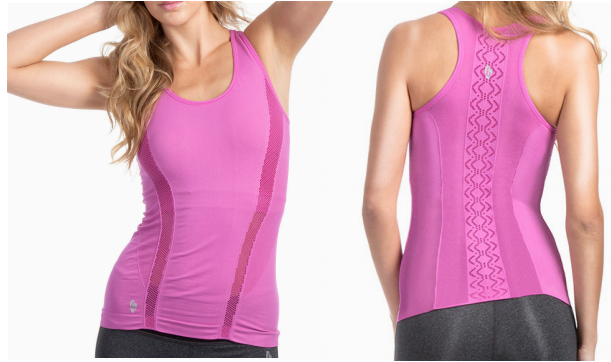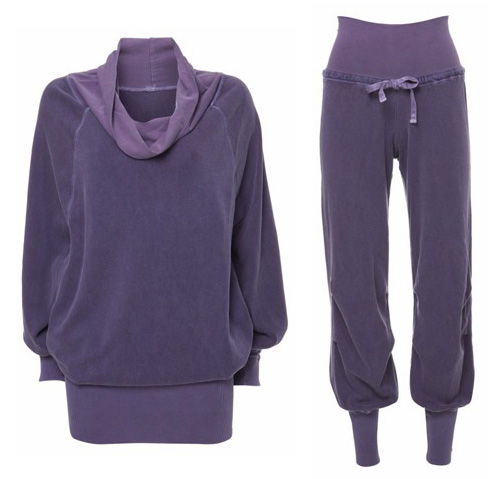Source:- Google.com.pk
Apparel is fiber and textile material worn on the body. The wearing of clothing is a feature of nearly all human societies. The amount and type of clothing worn is dependent on physical stature, gender, as well as social and geographic considerations.Physically, clothing serves many purposes: it can serve as protection from weather, and can enhance safety during hazardous activities such as hiking and cooking. It protects the wearer from rough surfaces, rash-causing plants, insect bites, splinters, thorns and prickles by providing a barrier between the skin and the environment. Clothes can insulate against cold or hot conditions. Further, they can provide a hygienic barrier, keeping infectious and toxic materials away from the body. Clothing also provides protection from harmful UV radiation.Clothes can be made out of fiber plants such as cotton, plastics such as polyester, or animal skin and hair such as wool. Humans began wearing clothes roughly 83,000 to 170,000 years ago.Main article: History of clothingKnowledge of the origin of clothing remains inferential, since clothing materials deteriorate quickly compared to stone, bone, shell and metal artifacts, but some information has been inferred by studying lice. The body louse specifically lives in human clothing and when it diverged from head lice it can be inferred that clothing existed at that time. One study estimated that this happened between 83,000 to 170,000 years ago,another estimates between 65,000 and 149,000 years ago.Archeologists have identified very early sewing needles made of bone and ivory which were found near Kostyonki, Russia in 1988 and are dated to about 30,000 BC.Dyed flax fibers that could have been used in clothing have been found in a prehistoric cave in the Republic of Georgia that date back to 36,000 BP.Making fabric by hand is a tedious and labor-intensive process. The textile industry was the first to be mechanized – with the powered loom – during the Industrial Revolution.Different cultures have evolved various ways of creating clothes out of cloth. One approach simply involves draping the cloth. Examples of garments consisting of rectangles of cloth wrapped to fit include the dhoti for men and the sari for women in the Indian subcontinent, the Scottish kilt and the Javanese sarong. The clothes may simply be tied up, as is the case of the first two garments; or pins or belts are used to hold the garments in place, as in the case of the latter two. The cloth remains uncut, and people of various sizes or the same person at different sizes can wear the garment.Another approach involves cutting and sewing the cloth, but using every bit of the cloth rectangle in constructing the clothing. The tailor may cut triangular pieces from one corner of the cloth, and then add them elsewhere as gussets. Traditional European patterns for men's shirts and women's chemises take this approach.Modern European fashion treats cloth much less conservatively, typically cutting in such a way as to leave various odd-shaped cloth remnants. Industrial sewing operations sell these as waste; home sewers may turn them into quilts.
In the thousands of years that humans have spent constructing clothing, they have created an astonishing array of styles, many of which have been reconstructed from surviving garments, photos, paintings, mosaics, etc., as well as from written descriptions. Costume history serves as a source of inspiration to current fashion designers, as well as a topic of professional interest to costumers constructing for plays, films, television, and historical reenactment.A baby wearing many items of winter clothing: headband, cap, fur-lined coat, shawl and sweaterA primary function of clothing is to improve the comfort of the wearer by providing protection against the elements. Clothing provides protection from sunburn in warm weather, and protection from frostbite in cold weather. Shelter reduces the need for protective clothing. For example, coats, hats, gloves, and other superficial layers are normally removed when entering a warm home. Clothes also reduce risk during activities such as work or sport. Some clothing protects from specific environmental hazards, such as insects, noxious chemicals, weather, weapons, and contact with abrasive substances. Conversely, clothing may protect the environment from the clothing wearer, as with doctors wearing medical scrubs.
Humans have shown extreme inventiveness in devising clothing solutions to environmental hazards. Examples include: space suits, air conditioned clothing, armor, diving suits, swimsuits, bee-keeper gear, motorcycle leathers, high-visibility clothing, and other pieces of protective clothing.Clothing also performs a range of social and cultural functions. Clothing can be used to indicate social status and convey individual, occupational, and sexual differentiation.In many societies, norms about clothing reflect standards of modesty, religion, gender, and social status. They cover parts of the body that social norms require to be covered, act as a form of adornment, and provide an expression of personal taste and style.Clothing has been made from a very wide variety of materials. Materials have ranged from leather and furs, to woven materials, to elaborate and exotic natural and synthetic fabrics. Not all body coverings are regarded as clothing. Articles carried rather than worn (such as purses), worn on a single part of the body and easily removed (scarves), worn purely for adornment (jewelry), or those that serve a function other than protection (eyeglasses), are normally considered accessories rather than clothing, as are footwear and hats. The distinction between clothing and protective equipment is not always clear-cut—since clothes designed to be fashionable often have protective value and clothes designed for function often consider fashion in their design.
Although dissertations on clothing and its function appear from the 19th century as colonising countries dealt with new environmentsconcerted scientific research into psycho-social, physiological and other functions of clothing (e.g. protective, cartage) occurred in the first half of the 20th century, with publications such as J. C. Flügel's Psychology of Clothes in 1930, and Newburgh's seminal Physiology of Heat Regulation and The Science of Clothing in 1949.[11] By 1968, the field of environmental physiology had advanced and expanded significantly, but the science of clothing in relation to environmental physiology had changed little.While considerable research has since occurred and the knowledge-base has grown significantly, the main concepts remain unchanged, and indeed Newburgh's book is still cited by contemporary authors, including those attempting to develop thermoregulatory models of clothing development.
Former 3rd Duke of Fife wearing a traditional Scottish kilt. (1984)
Former US Secretary of State Condoleezza Rice and Turkish President Abdullah Gül both wearing Western-style business suits.In most cultures, gender differentiation of clothing is considered appropriate for men and women. The differences are in styles, colors and fabrics.In Western societies, skirts, dresses and high-heeled shoes are usually seen as women's clothing, while neckties are usually seen as men's clothing. Trousers were once seen as exclusively male clothing, but are nowadays worn by both genders. Male clothes are often more practical (that is, they can function well under a wide variety of situations), but a wider range of clothing styles are available for females. Males are typically allowed to bare their chests in a greater variety of public places. It is generally acceptable for a woman to wear traditionally male clothing, while the converse is unusual.In some cultures, sumptuary laws regulate what men and women are required to wear. Islam requires women to wear more modest forms of attire, usually hijab. What qualifies as "modest" varies in different Muslim societies. However, women are usually required to cover more of their bodies than men are. Articles of clothing Muslim women wear for modesty range from the headscarf to the burqa.
Men may sometimes choose to wear men's skirts such as togas or kilts, especially on ceremonial occasions. Such garments were (in previous times) often worn as normal daily clothing by men. Women's clothing tends to be worn to attract the attention of menA barong Tagalog made in Fiber.Alim Khan's bemedaled robe sends a social message about his wealth, status, and power
In some societies, clothing may be used to indicate rank or status. In ancient Rome, for example, only senators could wear garments dyed with Tyrian purple. In traditional Hawaiian society, only high-ranking chiefs could wear feather cloaks and palaoa, or carved whale teeth. Under the Travancore Kingdom of Kerala, (India), lower caste women had to pay a tax for the right to cover their upper body. In China, before establishment of the republic, only the emperor could wear yellow. History provides many examples of elaborate sumptuary laws that regulated what people could wear. In societies without such laws, which includes most modern societies, social status is instead signaled by the purchase of rare or luxury items that are limited by cost to those with wealth or status. In addition, peer pressure influences clothing choice.
See also: Category:Religious vesture
Nicolas Trigault, a Flemish Jesuit, in Ming-style Confucian scholar costume, by Peter Paul Rubens. This drawing shows a fusion between West and East also Christianity and Confucianism.
Muslim men traditionally wear white robes and a cap during prayers
Religious clothing might be considered a special case of occupational clothing. Sometimes it is worn only during the performance of religious ceremonies. However, it may also be worn everyday as a marker for special religious status. For example, Jains and Muslim men wear unstitched cloth pieces when performing religious ceremonies. The unstitched cloth signifies unified and complete devotion to the task at hand, with no digression.[citation needed] Sikhs wear a turban as it is a part of their religion.
Most Abrahamic religions prohibit cross-dressing. The cleanliness of religious dresses in Eastern religions like Hinduism, Sikhism, Buddhism, Islam and Jainism is of paramount importance, since it indicates purity.
Clothing figures prominently in the Bible where it appears in numerous contexts, the more prominent ones being: the story of Adam and Eve who made coverings for themselves out of fig leaves, Joseph's cloak, Judah and Tamar, Mordecai and Esther. Furthermore the priests officiating in the Temple had very specific garments, the lack of which made one liable to death.In Islamic traditions, women are required to wear long, loose, non-transparent outer dress when stepping out of the home.[citation needed] This dress code was democratic (for all women regardless of status). The Quran says this about husbands and wives: "...They are clothing/covering (Libaas) for you; and you for them" Jewish ritual also requires rending of one's upper garment as a sign of mourning. This practice is found in the Bible when Jacob hears of the apparent death of his son Joseph.Main article
The Western dress code has been evolving over the past 500+ years. The mechanization of the textile industry made many varieties of cloth widely available at affordable prices. Styles have changed, and the availability of synthetic fabrics has changed the definition of "stylish". In the latter half of the 20th century, blue jeans became very popular, and are now worn to events that normally demand formal attire. Activewear has also become a large and growing market.The licensing of designer names was pioneered by designers like Pierre Cardin in the 1960s and has been a common practice within the fashion industry from about the 1970s.By the early years of the 21st century, western clothing styles had, to some extent, become international styles. This process began hundreds of years earlier, during the periods of European colonialism. The process of cultural dissemination has perpetuated over the centuries as Western media corporations have penetrated markets throughout the world, spreading Western culture and styles. Fast fashion clothing has also become a global phenomenon. These garments are less expensive, mass-produced Western clothing. Donated used clothing from Western countries is also delivered to people in poor countries by charity organizations.People may wear ethnic or national dress on special occasions or in certain roles or occupations. For example, most Korean men and women have adopted Western-style dress for daily wear, but still wear traditional hanboks on special occasions, like weddings and cultural holidays. Items of Western dress may also appear worn or accessorized in distinctive, non-Western ways. A Tongan man may combine a used T-shirt with a Tongan wrapped skirt, or tupenu.
Fashion shows are often the source of the latest style and trends in clothing fashions.
Fitness Apparel Fitness Exercise for Women for Men for Women at Home for Men at Home Abs For Kids for Women to Lose Weight Tumblr Photos
Fitness Apparel Fitness Exercise for Women for Men for Women at Home for Men at Home Abs For Kids for Women to Lose Weight Tumblr Photos
Fitness Apparel Fitness Exercise for Women for Men for Women at Home for Men at Home Abs For Kids for Women to Lose Weight Tumblr Photos
Fitness Apparel Fitness Exercise for Women for Men for Women at Home for Men at Home Abs For Kids for Women to Lose Weight Tumblr Photos
Fitness Apparel Fitness Exercise for Women for Men for Women at Home for Men at Home Abs For Kids for Women to Lose Weight Tumblr Photos
Fitness Apparel Fitness Exercise for Women for Men for Women at Home for Men at Home Abs For Kids for Women to Lose Weight Tumblr Photos
Fitness Apparel Fitness Exercise for Women for Men for Women at Home for Men at Home Abs For Kids for Women to Lose Weight Tumblr Photos
Fitness Apparel Fitness Exercise for Women for Men for Women at Home for Men at Home Abs For Kids for Women to Lose Weight Tumblr Photos
Fitness Apparel Fitness Exercise for Women for Men for Women at Home for Men at Home Abs For Kids for Women to Lose Weight Tumblr Photos
Fitness Apparel Fitness Exercise for Women for Men for Women at Home for Men at Home Abs For Kids for Women to Lose Weight Tumblr Photos
Fitness Apparel Fitness Exercise for Women for Men for Women at Home for Men at Home Abs For Kids for Women to Lose Weight Tumblr Photos










No comments:
Post a Comment